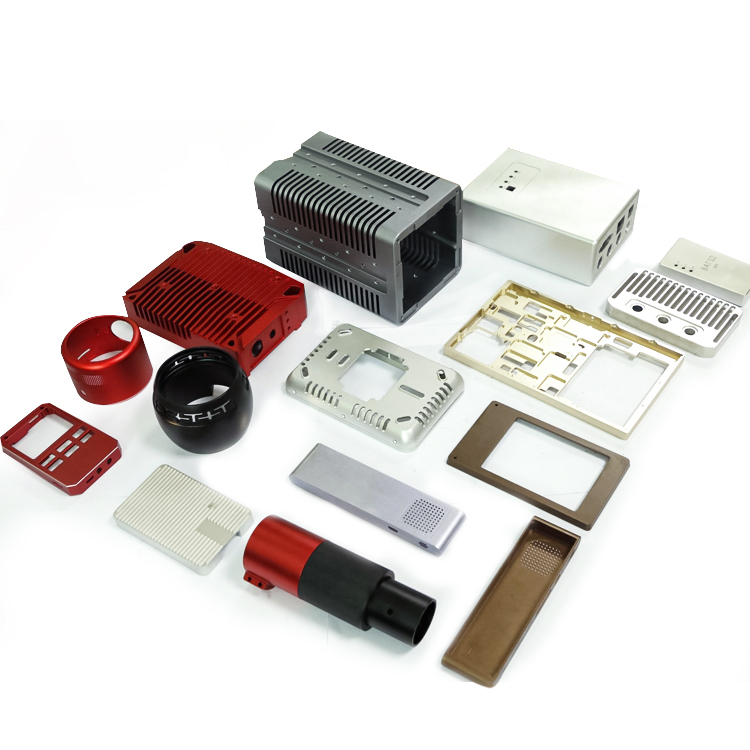15 years one-stop China custom CNC machining parts factory

Hey there I’m VMT Sam!
With 25 years of CNC machining experience we are committed to helping clients overcome 10000 complex part-processing challenges all to contribute to a better life through intelligent manufacturing. Contact us now
 134 |
Published by VMT at Apr 16 2024
134 |
Published by VMT at Apr 16 2024
With the rapid advancement of technology, robot technology, as a critical pillar of modern manufacturing, places high demands on the precision and quality of its components. CNC machining technology, known for its high precision and efficiency, plays an irreplaceable role in the manufacturing of robot parts. This article delves into the specific robot parts that are CNC machined, elucidating the advantages and applications of CNC machining in the production of these components.

I. Overview of CNC Machined Robot Parts
Robot CNC parts refer to various components utilized within robotic systems, undergoing precise machining and assembly to ensure robots execute precise movements and operations as per predefined programs. These parts typically possess complex geometric shapes and high precision dimensional requirements, making CNC machining the preferred method for their manufacture.

II. Applications of CNC Machining in Manufacturing Robot CNC Parts
Robot Joint Parts: Joints are critical components enabling robot motion, such as elbow and knee joints. These parts endure significant loads and frequent movements, necessitating high strength and precision. CNC machining can precisely manufacture complex-shaped joint parts with high accuracy, ensuring smooth and precise robot movements.
Robot Transmission Parts: Transmission components like gears and bearings are crucial for transmitting motion within robots. These parts require exceptional wear resistance and precision to ensure the stability and reliability of robot transmission. CNC machining employs precise cutting and grinding processes to produce transmission parts meeting these stringent requirements.
Robot Structural Parts: Structural components like frames and connecting plates constitute the main framework of robots. These parts need sufficient strength and rigidity to support the robot's overall structure and withstand external loads. CNC machining can accurately manufacture these parts' shapes and dimensions, enhancing the overall stability and load-bearing capacity of robots through rational structural design.
Sensor Mounting Bases for Robots: Sensors are vital components enabling robots to perceive the external environment, with the precision of their mounting bases directly affecting the robot's sensing capabilities. CNC machining ensures precise fabrication of sensor mounting bases in terms of shape and size, ensuring accurate sensor installation and stable operation.
III. Advantages of CNC Machining in Manufacturing Robot CNC Parts
High-Precision Machining: CNC machining technology, utilizing advanced numerical control systems and servo drive devices, achieves micron-level machining accuracy, meeting the high-precision dimensional and shape requirements of robot CNC parts.
Efficient Production: CNC machining equipment features automation and intelligence, enabling continuous and stable machining operations, thereby improving production efficiency. Additionally, by optimizing CNC programs and equipment configurations, machining cycles can be further shortened, reducing production costs.
High Flexibility: CNC machining technology can adapt to the machining requirements of robot CNC parts of different shapes, sizes, and materials. Through tool, fixture, and programming adjustments, machining transitions between different parts can be easily accomplished, enhancing production line flexibility and adaptability.
IV. Conclusion
CNC machining technology plays a crucial role in the manufacturing of robot CNC parts. Through precise machining and assembly, CNC machining can produce various parts meeting the performance requirements of robots, driving the continuous development of robot technology. In the future, as robot technology continues to advance and its application domains expand, CNC machining technology will play an even more critical role in the manufacturing of robot CNC parts.
However, CNC machining technology also faces challenges and limitations, such as high equipment costs and stringent requirements for operator skills. Therefore, CNC machining factories need to continuously enhance their technical capabilities, optimize equipment configurations, and strengthen personnel training to address these challenges and meet the growing demand for robot CNC parts manufacturing. Furthermore, attention should be paid to the development trends of new technologies and processes, continuously promoting the innovation and application of CNC machining technology, providing robust support for the rapid development of robot technology.
Ready To Start Your Next Project?
Get Instant Quote

Request a Free Quote
Send us a message if you have any questions or request a quote. We will get back to you ASAP!